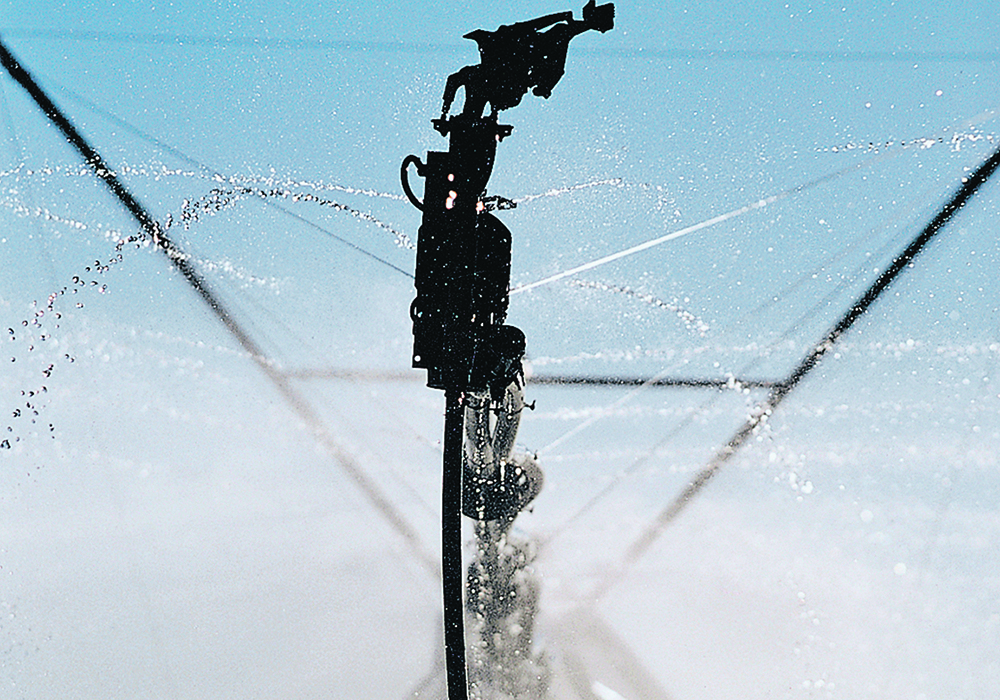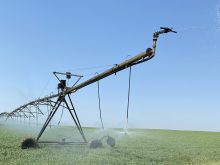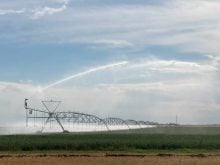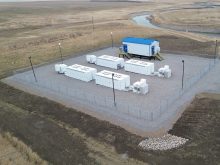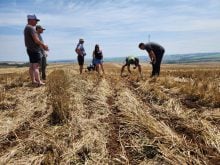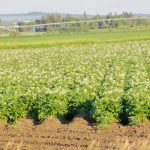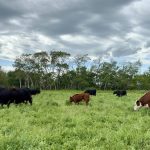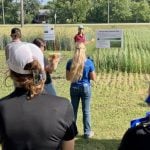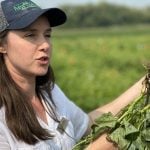The fact that many proposals and studies have failed over the decades to bring irrigation to a region of east-central Alberta depopulated by drought about a century ago isn’t deterring Jordon Christianson.
“How confident am I that this will happen?” said Christianson, who is chair of the Special Areas Board. “Well, I think that I’m reasonably optimistic about this one. I think there are a lot of things that point in the right direction here.”
Related stories in this issue:
- Province plans to modernize Alta. irrigation legislation
- U.S. dam project to boost southern Alberta river flow
The Alberta government and the Canada Infrastructure Bank announced Dec. 5 they were joining the board and the Municipal District of Acadia to collectively provide about $7 million for a proposed irrigation project. They are funding the second phase of planning for the potential initiative, including preliminary engineering, environmental and regulatory considerations, and possible financing options.
Water might be brought to 108,000 acres of land at an estimated cost of $1.3 billion, helping to attract more people by boosting agriculture in the region. However, officials must first overcome obstacles that include figuring out how to affordably pump water up from the Red Deer River, said Christianson.
“Depending on where the pump station is located, it’s a 200- to 400-foot lift out of that river valley… so, it’s significant,” he said during an interview.
“All the gravity-fed systems in the province have been developed, and so now we’re left with the hard stuff. Energy is going to be a big part of it, but I think our focus is going to be on designing an efficient system, and then maybe we can go to private industry and figure out some ideas on managing the energy costs behind it.”
It could potentially include using power generated by solar or wind for the pump station instead of using electricity from traditional sources, he said.
“I think it’s all on the table, and again, it’s just a concept at this point, so we’ve still got to do a lot of work on that.”
Christianson spoke about the project as part of a panel discussion during the recent annual conference of the Alberta Irrigation Districts Association in Calgary. He said the creation of the Special Areas Board in 1938 was a response to a tragedy caused by federal officials in the late 19th and early 20th centuries.
They ignored warnings that the grasslands of what is now Special Areas 2, 3 and 4 lacked sufficient precipitation for the type of dryland grain farming practised at the time in the Prairies. The board administers slightly more than five million acres of land, which is most of the Alberta portion east of Drumheller of the dry belt of the Palliser Triangle.
Prolonged droughts that began in 1917 and continued into the 1930s forced the departure of most of the original farmers who first settled the region. Thousands of people went bankrupt and lost everything, which bankrupted municipalities due to lack of taxes and forced the creation of the board, said Christianson.
The Special Areas contained 29,700 people in 1921, which is about eight times the current total, said Christianson.
“You know, just saying that aloud, I have a hard time rationalizing that in a province like Alberta where we’ve got so much prosperity, so much opportunity, and yet there’s this vast region in east-central Alberta that has a population that is eight times lower today…”
Declining population remains a significant concern, said Jason Wallsmith, chief administrative officer for the Municipal District of Acadia near Empress, Alta. The municipality is surrounded on three sides by the Special Areas, he said.
“This is a powerful comment for us where we see that our census division is actually projected to decline by an additional four percent by 2046, being the biggest decrease in the province…. Our goal really for the irrigation project is to be able to help stabilize and support our schools or hospitals with more people in the area.”

There is little linear tax assessment left for the municipality from the oil and gas industry, which has dried up, he said in an interview. “So really, sustainability for our economy is based on ag.”
However, climate change is increasing the risks faced by producers in a region that traditionally has problems getting sufficient moisture, said Wallsmith.
“As an example, basically the last two or three years have been drought, with some producers having almost full writeoffs due to drought.”
The feasibility of irrigating the region through diversions that included the North Saskatchewan River and the Red Deer River has been examined in studies dating back to 1935, said Christianson.
“Obviously, those projects never materialized, and nothing was ever developed beyond just the plan on paper.”
The second phase of work for the current project is expected to take up to two years, said Wallsmith.
“And really the goals there are to confirm what we think we know, start some of the environmental and regulatory considerations, and refine the economic model to be able to prove that, again, the project works and that it’ll be feasible.”


